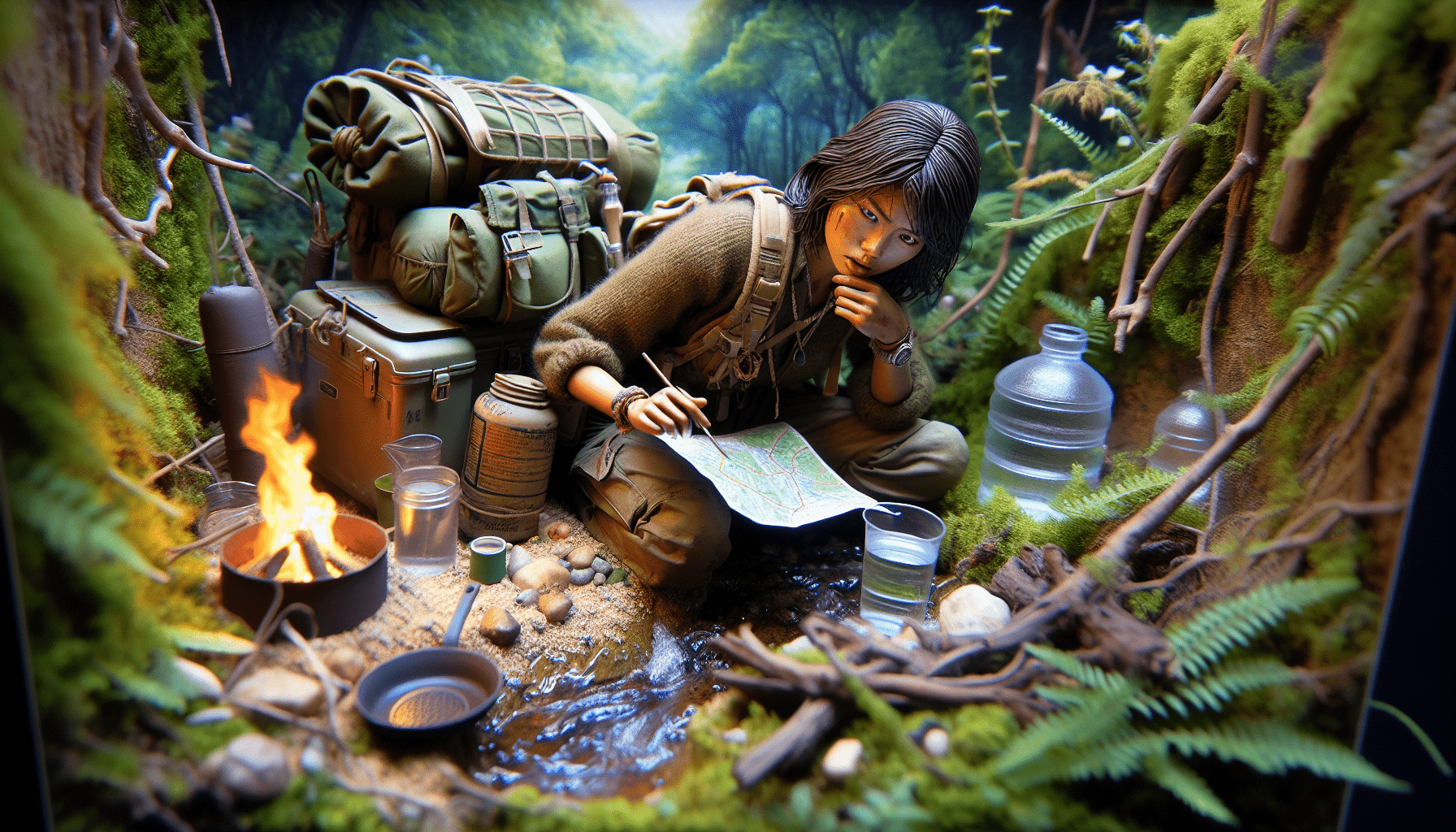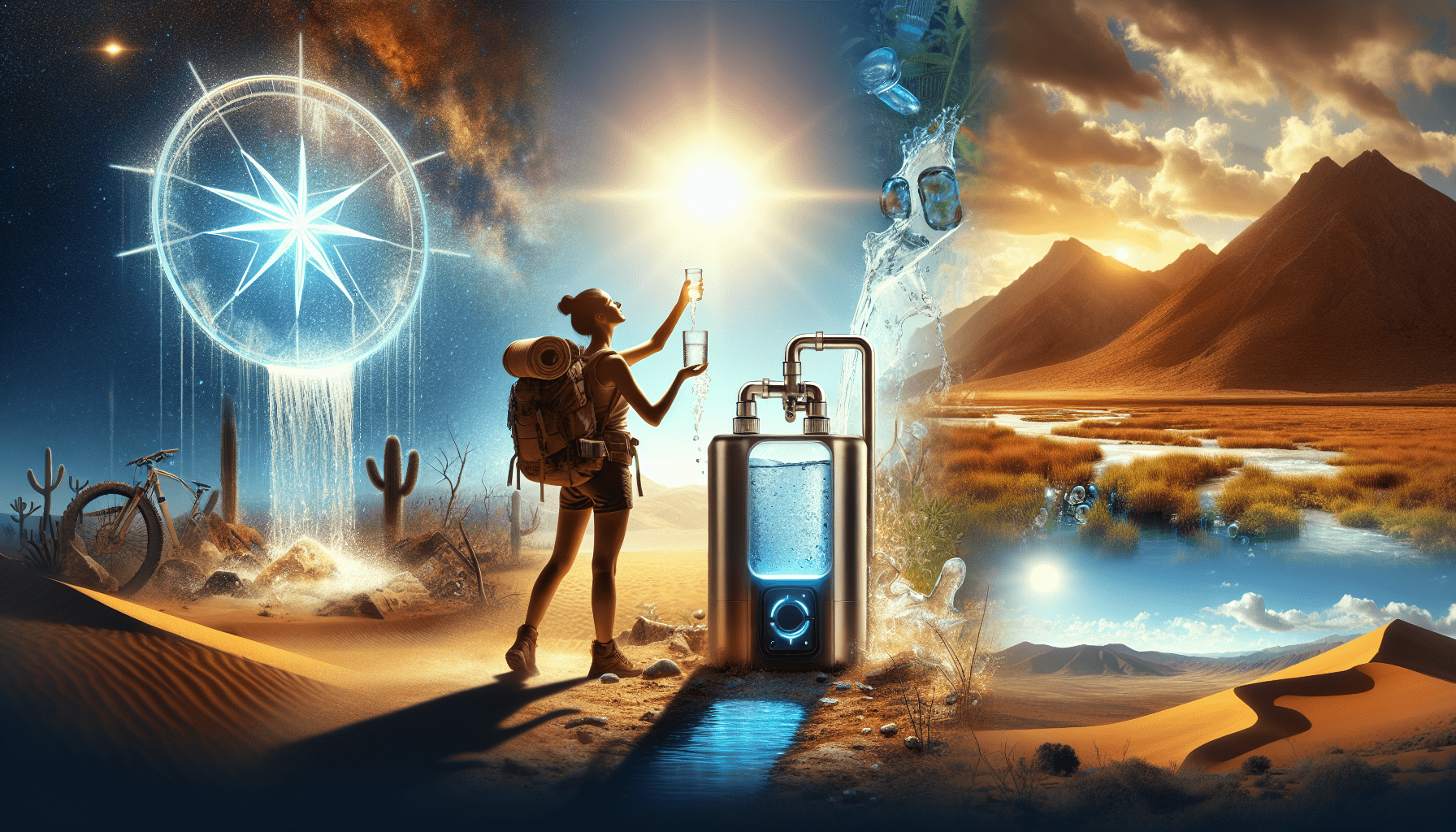In a survival situation, staying hydrated is essential for your overall well-being and chances of survival. Without access to clean drinking water, it can be challenging to maintain a proper level of hydration. However, there are several strategies you can employ to ensure you stay hydrated, even in the most difficult circumstances. From finding water sources and purifying it to rationing your water supply and utilizing alternative hydration methods, this article will provide you with practical tips to keep yourself hydrated and increase your chances of making it through a survival situation.

Importance of hydration in a survival situation
In a survival situation, the importance of hydration cannot be emphasized enough. Water is absolutely essential for your body to function properly, and without enough of it, your health and chances of survival are greatly compromised. Dehydration is a serious risk in survival scenarios, and understanding the effects and risks of dehydration is crucial to ensuring your well-being.
Dehydration risks
Dehydration occurs when your body loses more fluids than it takes in. This can happen due to a variety of factors, such as sweating, breathing, and urinating. In a survival situation, the risks of dehydration are heightened because you may not have access to clean drinking water or may not be able to replenish your fluids as easily. Additionally, the physical exertion and stress of survival can increase your body’s fluid requirements, making it even more important to stay hydrated.
Effects of dehydration
Dehydration can have serious consequences on your overall health, particularly in a survival situation where you may already be facing numerous challenges. Some common effects of dehydration include:
- Reduced physical and cognitive performance: Dehydration can lead to fatigue, dizziness, and confusion, making it difficult to perform even basic survival tasks.
- Increased risk of heatstroke and hypothermia: Without enough water, your body’s ability to regulate temperature is compromised, making you more susceptible to extreme heat or cold.
- Impaired digestion and nutrient absorption: Water is essential for proper digestion and absorption of nutrients. Dehydration can lead to digestive issues, making it harder for your body to extract nutrients from food.
- Weakened immune system: Water helps remove toxins from your body and supports the proper functioning of your immune system. Dehydration can weaken your immune system, making you more susceptible to illness and infection.
Sources of water in a survival situation
Finding sources of water in a survival situation is crucial for your hydration and overall survival. While it may seem challenging to locate water in unfamiliar or wilderness environments, there are some reliable methods for finding and collecting water.
Finding natural water sources
Natural water sources such as rivers, streams, and lakes can provide a reliable source of water in a survival situation. Look for signs of flowing water, as stagnant water sources may be contaminated. However, it’s important to remember that even natural water sources can contain harmful bacteria, parasites, or chemicals. It’s essential to purify the water before consuming it.
Collecting rainwater
Rainwater is a valuable resource that can be collected and utilized for hydration. Setting up a rainwater catchment system using a tarp or other waterproof material can help you collect rainwater efficiently. Be sure to filter or purify the collected rainwater before drinking.
Water purification methods
If you don’t have access to clean drinking water, it’s crucial to purify any water you find in the wild. Some effective water purification methods include boiling, using water purification tablets or drops, and using a portable water filter. These methods can help remove harmful bacteria, parasites, and contaminants from water, making it safe for consumption.
Water storage and transportation
Once you have obtained water, it’s important to store and transport it effectively to ensure a steady supply of hydration in a survival situation.
Effective water storage containers
Choose suitable water storage containers that are durable, leak-proof, and lightweight. BPA-free plastic bottles or collapsible water bladders are popular choices, as they are easy to carry and can hold a significant amount of water. Make sure to clean and sanitize the containers regularly to prevent the growth of bacteria.
Packaging and carrying water
Efficiently packaging and carrying water is essential for mobility and conservation of resources in a survival situation. Consider using a backpack with dedicated water bottle pockets or a hydration bladder system that allows you to drink water on the go without stopping or using your hands. Distribute the weight of water evenly to prevent strain or discomfort during long hikes or treks.

Hydration tips and strategies
Establishing a hydration routine and employing effective strategies can help you maintain optimal hydration levels in a survival situation.
Establishing a hydration schedule
It’s essential to establish a hydration schedule to ensure you’re drinking enough water throughout the day. Aim to drink small but frequent amounts of water instead of waiting until you’re feeling thirsty. Set reminders or use a watch with alarms to help you stay on track with your hydration goals.
Avoiding excessive sweating
While it may be challenging to avoid sweating in a survival situation, taking steps to minimize excessive sweating can help conserve water. Avoid overexertion during the hottest parts of the day and seek shade whenever possible. Wear lightweight, breathable clothing that allows for ventilation and evaporation of sweat. Consider using a bandana or hat to protect your head from direct sunlight and reduce heat buildup.
Drinking smaller amounts frequently
Rather than chugging large amounts of water, it’s more effective to sip smaller amounts consistently throughout the day. This allows your body to absorb and utilize the water more efficiently. Remember to pace yourself and avoid drinking water too quickly, as it can lead to discomfort or nausea.
Avoiding alcohol and caffeinated beverages
Alcohol and caffeinated beverages, such as coffee or energy drinks, can contribute to dehydration as they have diuretic effects. These substances increase urine production and can accelerate fluid loss from the body. It’s best to avoid or minimize their consumption in a survival situation and prioritize water or electrolyte-rich beverages instead.
Signs of dehydration and how to detect
Monitoring your body’s hydration levels is crucial in a survival situation. Recognizing the signs and symptoms of dehydration can help you take prompt action to replenish your fluids.
Monitoring urine color and frequency
One of the easiest ways to assess your hydration levels is to monitor the color and frequency of your urine. Dark-colored urine or infrequent urination may indicate dehydration, while light-colored urine indicates adequate hydration. Keep in mind that certain medications, supplements, and certain foods can affect urine color, so it’s important to consider other symptoms as well.
Recognizing symptoms of dehydration
In addition to monitoring urine color, familiarize yourself with the common symptoms of dehydration. These include excessive thirst, dry mouth, fatigue, dizziness, muscle cramps, reduced urine output, and confusion. If you experience any of these symptoms, it’s essential to prioritize fluid intake and take steps to address your dehydration immediately.
Improving water intake through food selection
Choosing hydrating foods and incorporating electrolyte-rich food sources can help supplement your water intake and support hydration in a survival situation.
Choosing hydrating foods
Certain fruits and vegetables are high in water content and can contribute to your overall hydration. Watermelon, cucumbers, oranges, and lettuce are excellent examples of hydrating foods. Incorporating these foods into your survival diet can help supplement your fluid intake and provide essential nutrients.
Importance of electrolytes
Electrolytes play a crucial role in maintaining fluid balance and hydration. They help regulate nerve and muscle function and support various bodily processes. In a survival situation, replenishing electrolytes is vital. Foods rich in electrolytes include bananas, avocados, nuts, and coconut water. Consider including these foods in your survival diet to support optimal hydration.
Creating improvised water sources
In desperate situations where natural water sources are scarce or unavailable, it may be necessary to create improvised water sources.
Making solar stills
Solar stills utilize the heat from the sun to evaporate water, collect the condensation, and produce drinkable water. By building a simple solar still using a container, plastic sheeting, and rocks, you can extract moisture from plants or damp soil. Solar stills can be a lifesaver in situations where finding water is a significant challenge.
Building water condensation traps
Water condensation traps can be constructed using a plastic bag or other waterproof materials. By placing vegetation or moist soil inside the bag and securing it tightly, you can create a microenvironment where water vapor collects and condenses on the bag’s inner surface. This condensed water can then be collected and consumed.
Water conservation methods
In a survival situation, conserving water is essential to prolong your water supply and increase your chances of survival.
Reusing water
Whenever possible, make efforts to reuse water for various purposes. For example, water used for washing dishes or clothes can be repurposed for irrigation or flushing toilets if available. Avoid wastage and maximize the utility of every drop of water.
Limiting water loss
Minimizing water loss through evaporation or leakage is crucial in a survival situation. Seal containers tightly to prevent evaporation, and avoid leaving water containers directly in the sun, as it can accelerate evaporation. Be mindful of spills and leaks, and take necessary precautions to mitigate any potential loss of water.
Hydration for different environments
Staying hydrated can present unique challenges depending on the environment you find yourself in. Consider the following tips for maintaining hydration in hot climates and cold weather.
Staying hydrated in hot climates
In hot climates, it’s essential to take extra measures to stay hydrated. Seek shade and shelter during the hottest parts of the day and avoid strenuous activities during peak heat. Drink water regularly and consider incorporating electrolyte-rich drinks to replenish lost minerals through sweat. Dress in lightweight, breathable clothing, and wear a hat and sunglasses to protect yourself from excessive heat and sun exposure.
Maintaining hydration in cold weather
Cold weather can be deceptive when it comes to maintaining hydration. In cold environments, your body still loses water through respiration and perspiration, even if you may not feel as thirsty. It’s important to drink water regularly and consider warm fluids to help regulate body temperature. Insulate your water containers to prevent freezing, and avoid consuming snow or ice directly as it can lower your body temperature and contribute to dehydration.
Preparation and planning for water needs
Proper preparation and planning for water needs can significantly increase your chances of survival in a challenging situation. Don’t underestimate the importance of water in your survival kit and develop a water procurement strategy.
Considering water requirements in survival kits
When assembling your survival kit, ensure you have sufficient water storage capacity and containers. Depending on the duration and anticipated challenges of your survival scenario, stockpile an adequate amount of water or devices for purifying water. Research the specific needs of the area you’ll be operating in and plan accordingly.
Developing a water procurement strategy
Having a strategy for procuring water in a survival situation is essential. Be aware of the natural water sources in your surroundings and how to locate them. Pack water filtration or purification devices that suit your needs, and familiarize yourself with the various water sources and purification methods available. By having a well-thought-out plan, you’ll be better equipped to secure a reliable source of water and sustain your hydration needs.
In summary, staying hydrated is of utmost importance in a survival situation. Understanding the risks and effects of dehydration, as well as employing effective strategies for finding, storing, and purifying water, can significantly improve your chances of survival. By prioritizing hydration and making it a fundamental part of your survival plan, you increase your ability to endure and overcome the challenges that may come your way.
